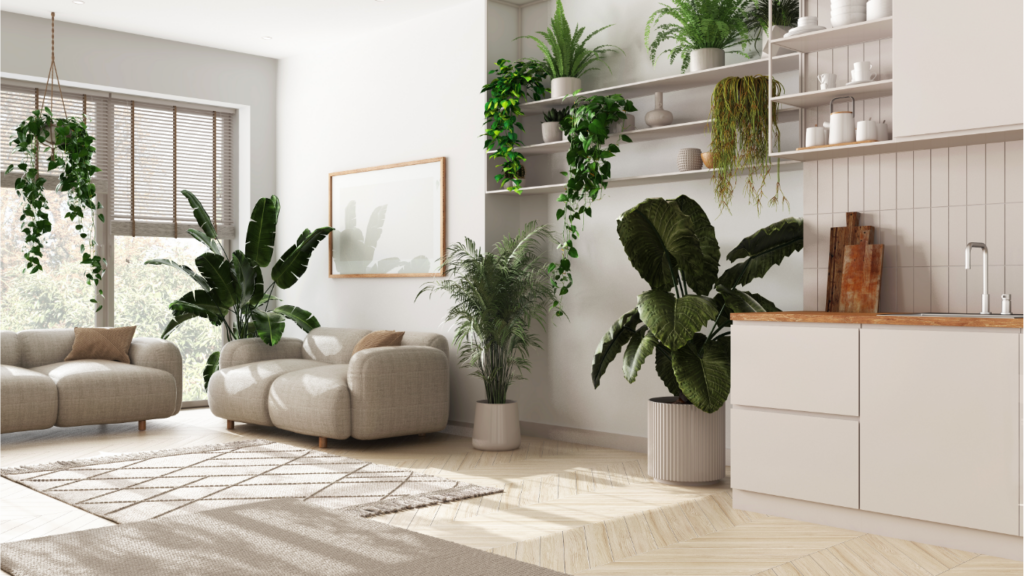Understanding Sustainability in Property Management
Sustainability in property management isn’t just a trend; it’s a long-term commitment to the environment and the community. Sustainable practices in property management focus on minimizing environmental impact while maximizing efficiency and livability. By incorporating eco-friendly methods, property owners can reduce costs and enhance the property’s value.
Key Principles of Sustainable Property Management
- Energy Efficiency
Energy efficiency plays a crucial role. Using LED lighting, installing programmable thermostats, and upgrading to energy-efficient appliances significantly reduces energy consumption. Smart devices can help monitor and control energy usage in real-time, optimizing overall efficiency. - Water Conservation
Implementing water-saving measures like low-flow fixtures and efficient irrigation systems helps reduce water usage. Rainwater harvesting systems can provide an additional water source for landscaping. - Waste Reduction
Effective waste management includes recycling programs, composting organic waste, and minimizing single-use plastics. Providing tenants and residents with clear recycling guidelines can ensure higher participation rates. - Sustainable Materials
Choosing sustainable building materials, such as bamboo flooring and recycled steel, promotes environmental responsibility. Sustainable landscaping uses native plants that require less water and maintenance.
- Cost Savings
Sustainable practices often lead to significant cost savings. Properties using less energy and water typically have lower utility bills. Upgrading to energy-efficient systems can also qualify property owners for tax incentives and rebates. - Increased Property Value
Properties with sustainable features often have higher market value. Potential buyers and renters increasingly prefer eco-friendly properties, recognizing the long-term value of lower utility costs and a reduced environmental footprint. - Positive Community Impact
Sustainable properties contribute positively to the community by reducing pollution and conserving resources. Green spaces within properties can improve residents’ quality of life, offering a healthier, more enjoyable living environment.
Understanding and implementing sustainability in property management isn’t just beneficial—it’s essential for creating a greener future. By adopting these practices, property managers can play a vital role in promoting environmental responsibility and ensuring long-term benefits for their properties and communities.
Energy Efficiency Improvements
Enhancing energy efficiency contributes significantly to making properties more sustainable. Utilize these strategies for noticeable improvements.
Switching to LED Lighting

LED lighting, a cornerstone of energy efficiency, uses up to 75% less energy than traditional incandescent bulbs and lasts 25 times longer. Given these benefits, replacing CFLs and incandescent bulbs with LEDs can reduce energy costs and lower carbon footprints. In commercial properties, consider automated lighting systems to further optimize energy use.
Installing Solar Panels
Solar panels, another effective way to boost energy efficiency, convert sunlight into electricity, reducing dependency on non-renewable energy sources. The average residential solar panel system can offset 80% of home energy use, according to the U.S. Department of Energy. Consider government incentives and tax credits when planning the installation of solar panels to mitigate upfront costs.
Investing in Energy-Efficient Appliances
Energy-efficient appliances, which are often labeled with the ENERGY STAR certification, consume less electricity and water. Refrigerators, dishwashers, and washing machines with this certification can collectively save hundreds of dollars annually on utility bills. Focus on upgrading the most frequently used appliances to maximize savings and efficiency.
Water Conservation Practices
Incorporating water conservation practices supports sustainability and enhances the property’s eco-friendliness. These methods reduce water usage and lower utility bills.
Implementing Low-Flow Fixtures
Low-flow fixtures significantly reduce water usage. Low-flow toilets use 1.28 gallons per flush compared to older models that use 3.5 gallons. Installing low-flow showerheads, which use 2.5 gallons per minute instead of the standard 5 gallons, helps conserve water. Faucet aerators also minimize water flow, achieving conservation without sacrificing performance.
Installing a Rainwater Harvesting System
Rainwater harvesting systems collect runoff from roofs and store it for later use. Systems include roofs, gutters, downspouts, and storage tanks. This harvested water can irrigate gardens, flush toilets, and even wash cars, reducing dependency on municipal water. The Environmental Protection Agency (EPA) states that these systems can save thousands of gallons annually.
Sustainable Landscaping
Sustainable landscaping transforms outdoor spaces into eco-friendly havens while reducing environmental impact and maintenance costs.
Choosing Native Plants
Selecting native plants supports local ecosystems and requires less water and maintenance. For instance, coneflowers and black-eyed Susans thrive in many US regions. Native plants often resist local pests, reducing the need for chemical pesticides. They also adapt to local soil, minimizing the need for fertilizers.
Composting and Organic Gardening
Implementing composting recycles organic waste into nutrient-rich soil. Kitchen scraps like vegetable peels and eggshells, combined with yard waste, create effective compost. Organic gardening avoids synthetic chemicals, promoting healthier plants and soil. Using natural fertilizers such as compost and mulches further enriches the earth, promoting sustainable growth.
Waste Reduction Techniques
Adopting waste reduction techniques can significantly impact the sustainability of your property. Implementing recycling, composting, and reducing plastic usage are pivotal steps.
Recycling and Composting
Recycling involves separating materials like:
- paper
- glass
- metals
for reprocessing. Use designated bins for each type of recyclable material to make sorting easier. Municipal guidelines often provide specific instructions on recyclable items, including paper and aluminum cans.
Composting biodegrades organic waste. Establish a composting system using kitchen scraps, yard waste, and cardboard in a yard or community garden. Compost enriches soil and reduces landfill waste. According to the EPA, properly managed composting can cut household waste by up to 30%.
Reducing Plastic Usage
Minimize single-use plastics by adopting reusable alternatives. Replace plastic bags with cloth ones for shopping. Use glass or metal containers for food storage. Invest in stainless steel water bottles instead of disposable plastic bottles. By reducing plastic dependency, you decrease non-biodegradable waste and environmental pollution. The UN reports that 300 million tons of plastic waste are generated annually, showing the significant impact of choosing reusable products.
Taking these steps creates a substantial difference in sustainability efforts. They contribute to the larger goal of reducing ecological footprints and promoting environmental health.
Green Building Materials
Implementing green building materials can significantly enhance the sustainability of your property. Choosing these materials helps reduce waste and promotes healthier living environments.
Using Recycled Materials
Using recycled materials contributes to reducing landfill waste. For example, recycled steel and reclaimed wood offer durability without the environmental cost of new production. Additionally, recycled glass countertops provide both aesthetic appeal and resource efficiency. By opting for these materials, properties can lower their carbon footprint and support the circular economy.
Opting for Non-Toxic Paints and Finishes
Opting for non-toxic paints and finishes ensures healthier indoor air quality. Traditional paints often contain Volatile Organic Compounds (VOCs) that can emit harmful gases. Low-VOC or zero-VOC paints are excellent alternatives, providing the same aesthetic benefits without the associated health risks. By selecting these finishes, property owners contribute to a safer, non-toxic environment for occupants.


 Herlindalla Hubbard has been a key contributor to Villa Estates Luxe, focusing on the integration of smart home technology within luxury villas. Her innovative ideas and expertise in modern technological trends have enriched the platform’s content, highlighting how these advancements can enhance luxury living and provide added convenience for homeowners. Herlindalla has also played a significant role in creating informative articles and resources that educate users about the benefits of smart technology in property management.
Herlindalla Hubbard has been a key contributor to Villa Estates Luxe, focusing on the integration of smart home technology within luxury villas. Her innovative ideas and expertise in modern technological trends have enriched the platform’s content, highlighting how these advancements can enhance luxury living and provide added convenience for homeowners. Herlindalla has also played a significant role in creating informative articles and resources that educate users about the benefits of smart technology in property management.